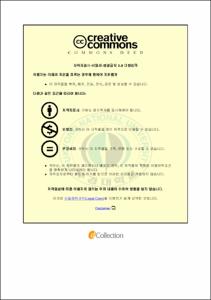Ecosystem-based resource assessment and management system for Red Sea fisheries off Egypt
- Abstract
- Fish landings in the Egyption waters of the Red Sea have declined substantially from 82,400 metric ton in the 1999s to 44,000 metric ton in 2010 due to overfishing. Fish habitat quality in the Red Sea has been degraded by anthropogenic activities including tourism activities and coastal pollution. In this study an ecosystem-based fisheries assessment (EBFA) approach Tier 2 developed by Zhang et al. (2011) have been used to assess the Red Sea fisheries. Nested risk indices, such as objectives risk index (ORI), species risk index (SRI), fishery risk index (FRI), and ecosystem risk index (ERI), were estimated status of the two years. The results of the status of the two years were compared. Management status indices for 2012 have shown significant negative change compared to condition 2002 with respect to sustainability, biodiversity, ecosystem habitat quality and socio-economy. From the assessment of seven fish species risk index by the Tier 2 approach, the Egypt Red Sea had 80% of indicators in the green zone, 18.1% in the yellow zone and 1.9% in the red zone in 2002. But in 2012 had 27.6% of indicators in the desirable green zone, 48.6% in yellow zone and 23.8% in red zone. Three fisheries namely; Purse seine, trawl and longline in 2002 had risk index 0.44, 0.79 and 0.46 respectively and fall in desirable green zone. But in 2012 they had risk index 1.78, 1.85 and 1.24 respectively and fall in yellow zone. The Egypt Red Sea ecosystem has risk index 0.70 in 2002 and fall in desirable green zone but in 2012 had 1.69 and fall in yellow zone. Recent 2012 management status indices have shown significant negative change compared to condition 2002 with respect to sustainability of the stock and fishery and with regards to biodiversity and ecosystem habitat quality and socio-economy. Therefore, the Red Sea fisheries management system need to be established considering four management objectives suggested in the study in order to improve the Red Sea marine ecosystem by reducing risk indices for each management objective.
- Issued Date
- 2015
- Awarded Date
- 2015. 2
- Type
- Dissertation
- Publisher
- 부경대학교
- Affiliation
- 국제수산과학협동과정
- Department
- 글로벌수산대학원 국제수산과학협동과정
- Advisor
- 장창익
- Table Of Contents
- Table of contents i
List of Figures iii
List of Tables vi
Abstract viii
I. Introduction 1
1.1. Overview of Red Sea fisheries 5
1.2. Characteristics of Red Sea fisheries 7
1.2.1. Purse seine fishery 7
1.2.2. Trawl fishery 8
1.2.3. Longline fishery 8
1.3. EBFM 10
II. Materials and Methods 13
2.1. Data sources 13
2.2. Methods 14
2.2.1. Target and limit reference points for indicators of sustainability 22
2.2.2. Target and limit reference points for indicators of biodiversity 23
2.2.3. Target and limit reference points for indicators of habitat quality 23
2.2.4. Target and limit reference points for indicators of socio-economy 24
III. Results 30
3.1. Assessment of risk scores to each indicator of the Red Sea fisheries 31
3.2. Assessment for the seven species of the Egypt Red Sea ecosystem by Tier 2 approach 35
3.3. Species Risk Indices of each fishery in Egypt Red Sea fisheries assessed by Tier 2 approaches 64
3.4. Fisheries Risk Indices and Ecosystem Risk Index for the Egypt Red Sea 71
IV. Discussion 75
References 84
Acknowledgement 89
Appendices 90
- Degree
- Master
- Appears in Collections:
- 글로벌수산대학원 > 국제수산과학협동과정
- Files in This Item:
-
-
Download
 Ecosystem-based resource assessment and management system for Red Sea fisheries off Egypt.pdf
기타 데이터 / 1.95 MB / Adobe PDF
Ecosystem-based resource assessment and management system for Red Sea fisheries off Egypt.pdf
기타 데이터 / 1.95 MB / Adobe PDF
-
Items in Repository are protected by copyright, with all rights reserved, unless otherwise indicated.